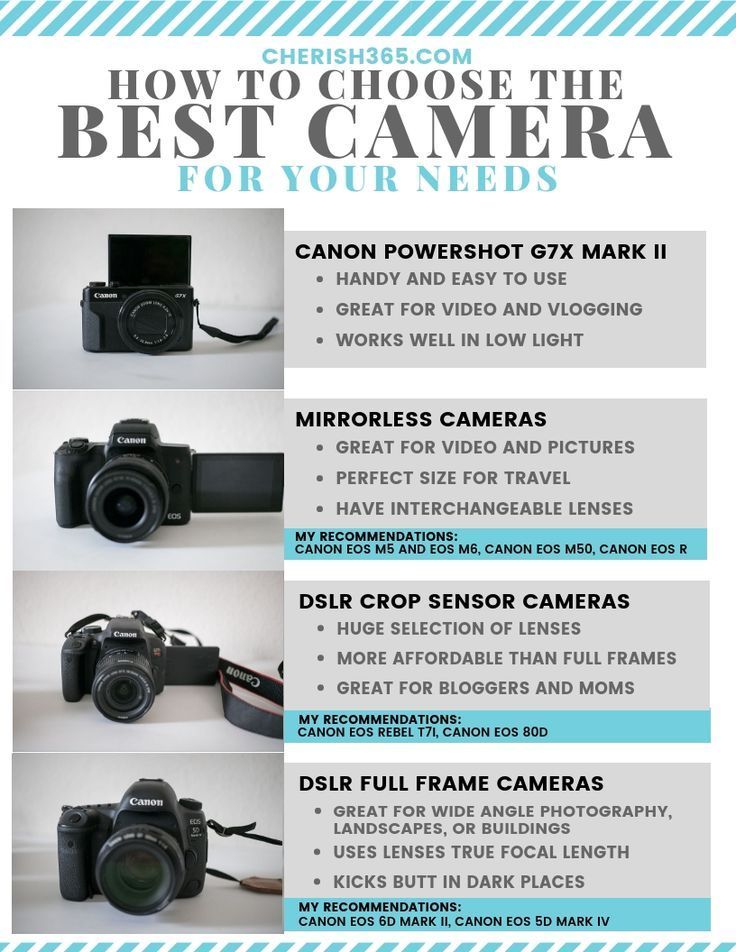Key Takeaways
-
Understand the significance of sensor size and choose between full-frame or crop sensors based on your needs.
-
Opt for a camera that balances weight with performance to ensure comfort during long wildlife shoots.
-
Invest in a lens with the right focal length and aperture to capture wildlife from a distance and in varying light conditions.
-
Look for cameras with rapid continuous shooting and quick autofocus to never miss a moment in the wild.
-
Consider ISO range and image stabilization features for sharp, clear photos in low light conditions.
Zooming into the Wild: A Guide to Selecting Your Wildlife Filming Partner
So, you’ve got a passion for wildlife and a desire to capture its essence on camera. It’s a pursuit that can bring you face to face with some of the most breathtaking moments nature has to offer. But before you’re out there, quietly waiting for the perfect shot, you need the right gear. And that starts with selecting the ideal camera for wildlife photography and videography.

“photography, Dslr photography tips …” from www.pinterest.com and used with no modifications.
Capturing the Heart of Wildlife Photography & Videography
Wildlife photography isn’t just about snapping pictures of animals. It’s about telling a story, capturing behaviors, and revealing the beauty of creatures in their natural habitat. The right camera will be your storytelling partner, capable of freezing fleeting moments and recording the dance of life in the wild.
Make Every Shot Count: What to Look For in a Camera
When you’re in the wild, you often only get one chance to capture the shot. That’s why the camera you choose must be reliable, quick, and capable of producing high-quality images and videos. Let’s dive into what makes a camera the right fit for your wildlife adventures.
Camera Body: The Foundation of Your Wildlife Story
Sensor Size: Full Frame vs. Crop
The sensor is the heart of your camera, and its size is crucial. Full-frame sensors are larger and can capture more light, which is excellent for low light conditions. Crop sensors, on the other hand, have a ‘crop factor’ that can give you extra reach with your lenses. This can be especially handy when photographing small or distant animals. Think about what you’ll be shooting most and choose accordingly.
Camera Weight: Balancing Portability and Performance
Out in the field, you’ll be on the move, sometimes for hours. A heavy camera can become a burden, while a light one may not have all the features you need. Find that sweet spot – a camera that feels good in your hands, is durable, and has the features necessary to capture wildlife in action.
Lenses: The Window to a Creature’s Soul
Reach Matters: Understanding Focal Length
The lens you choose can be more important than the camera itself. For wildlife, you’ll want a telephoto lens that can zoom in on the action. The focal length – the distance between the lens and the image sensor when your subject is in focus – determines how much you can zoom. A focal length of at least 400mm is often recommended for wildlife photography.
Aperture: Control the Light, Capture the Moment
Aperture affects the amount of light that reaches the sensor and the depth of field in your images. A lens with a wide aperture (a lower f-number) allows more light in, which is ideal for low light or fast action shots. It also gives you that beautiful blurred background, making your subject stand out.
Performance Under Pressure: Camera Speed and Autofocus
Wildlife won’t wait for you to fiddle with your camera settings. That’s why speed is of the essence. A camera that can shoot a high number of frames per second (fps) means you’re more likely to capture that split-second action. Look for a camera that can handle at least 5 fps, though for fast-moving subjects, 10 fps or more can be a game-changer.
Continuous Shooting: Never Miss a Beat
Continuous shooting mode, also known as burst mode, allows you to take multiple shots in rapid succession. This feature is a must-have for wildlife photographers. When a bird takes flight or a cheetah dashes across the plains, holding down the shutter button to reel off shot after shot could mean the difference between a good photo and a great one.
Autofocus Speed: Keep Your Subject in View
Autofocus (AF) speed is crucial when your subject is moving unpredictably. A camera with a fast and accurate autofocus system can keep up with the action, ensuring sharp images. Additionally, look for cameras with a high number of autofocus points. More points can lead to better tracking of your subject as it moves across the frame.
Navigating Low Light: ISO and Image Quality
Wildlife is often most active during dawn and dusk, which means low light conditions are common. A camera with a high ISO range can help you capture clear images in these situations without resorting to flash, which can disturb animals. However, a higher ISO can also mean more noise (graininess) in your photos.
ISO Range: Finding Clarity in Shadows
-
Look for cameras with a native ISO range up to at least 6400.
-
Check for the presence of advanced noise reduction capabilities.
-
Test different ISO levels to see how the camera performs in low light before purchasing.
But remember, it’s not just about the numbers. The camera’s sensor and image processing technology play a significant role in how well it handles high ISO settings. For more detailed guidance, consider reading about Buying a Camera for Wildlife Photography in 2024.
Image Stability: Reducing Blur in Your Captures
Image stabilization (IS) can be a lifesaver when you’re shooting handheld or in low light. IS technology compensates for camera shake, helping to keep your photos sharp at slower shutter speeds. Some cameras have built-in IS, while others rely on stabilization in the lens. Either way, it’s a feature that’s well worth having in your wildlife photography toolkit.
The Elements of Nature: Camera Durability Considerations
Wildlife photography often means exposing your gear to the elements. Therefore, durability should be high on your checklist. A camera that’s weather-sealed can withstand dust, moisture, and the occasional drop, keeping you shooting when conditions get tough.
Weather Sealing: Protecting Your Gear from the Unpredictable
Weather sealing varies between cameras, so check the specifics. Some offer basic protection against light rain, while others can handle much harsher conditions. If you’re planning to shoot in a variety of climates, from rainforests to deserts, weather sealing is non-negotiable.
Build Quality: Longevity in Harsh Conditions
A camera’s build quality goes hand-in-hand with weather sealing. A well-built camera can take a few knocks and keep on clicking. Look for a camera with a magnesium alloy body, which offers a good balance between weight and durability.
Video Capabilities: Telling Stories Beyond Stills
Wildlife videography is an increasingly popular way to tell stories about the natural world. When selecting a camera, consider its video features as well. High-definition (HD) video is the minimum standard, but 4K video is becoming increasingly common and offers stunning detail and clarity.
Frame Rates for Fluid Motion
For video, the frame rate determines how smooth the motion in your footage will be. A higher frame rate, like 60fps or even 120fps, is perfect for creating slow-motion sequences that can reveal the intricacies of animal behavior.
Resolution and Detail: 4K and Beyond
4K resolution provides a level of detail that can be breathtaking, especially for wildlife scenes. It also gives you the flexibility to crop your footage in post-production without losing quality. As technology advances, 6K and even 8K cameras are entering the market, offering even more detail for those who need it.
Diverse Ecosystems: Comparing Popular Camera Brands and Models
Now, let’s talk about some of the brands that are known for their prowess in wildlife photography and videography.
Nikon: The Powerhouse of Wildlife Photography
Nikon cameras are renowned for their robust build and exceptional image quality. Models like the Nikon D850 are favored by many wildlife photographers for their high resolution and impressive dynamic range.
Canon: Versatility Meets Technology
Canon offers a range of cameras that excel in both photo and video. The Canon EOS 5D Mark IV, for instance, is a versatile choice with a great autofocus system and 4K video capability.
Sony: Compactness Without Compromise
Sony’s mirrorless cameras, such as the Sony A9, are known for their compact size, fast autofocus, and excellent image quality. They’re a great choice if you want to lighten your load without sacrificing performance.
Choosing the right camera for wildlife photography and videography is a personal decision. It’s about finding the right tool that feels like an extension of your vision. Consider the factors we’ve discussed, and you’ll be well on your way to capturing the wonders of the wild.
When you’re gearing up for a wildlife filming session, it’s not just about having the right camera and lens. It’s also about how you use them. Every wildlife encounter is unique, and being prepared can make all the difference.
Grabbing Opportunity: Maximizing Your Wildlife Filming Sessions
Whether you’re waiting for hours in a hide or tracking animals on the move, being ready is key. That readiness comes from knowing your gear inside and out. You should be able to adjust settings without taking your eye off the viewfinder. Practice makes perfect, so spend time getting to know your camera’s dials and buttons before heading into the field.
Tips and Tricks for Optimal Camera Use
First, understand the behavior of the wildlife you’re seeking to capture. This knowledge can help you anticipate action and be ready when it happens. Next, always shoot in RAW format for the highest quality images and more flexibility in post-processing. And don’t forget to check and clean your gear regularly; a speck of dust on your sensor or lens can ruin a great shot.
Mastering the art of patience is also crucial. Sometimes, you’ll need to wait for the golden hour when the light is perfect. Other times, you might wait for an animal to reveal itself or perform an action. Patience can be the difference between a good image and a breathtaking one.
Lastly, remember to respect the wildlife and their habitat. Keep a safe distance and avoid causing any disturbance. Your presence should be as non-invasive as possible.
-
Learn your camera’s settings to adjust quickly to changing conditions.
-
Shoot in RAW for the best image quality.
-
Keep your gear clean and well-maintained.
-
Understand the behavior of your subject for better anticipation.
-
Be patient and respectful of wildlife.
Accessories: Enhancing Your Shooting Experience
Accessories can greatly enhance your wildlife filming experience. A sturdy tripod or monopod can help keep your shots steady, especially with long telephoto lenses. A remote shutter release allows you to take pictures without causing camera shake. And consider protective gear for your camera and lens, like rain covers and lens coats, to shield them from the elements.
FAQ
Now, let’s tackle some common questions you might have about starting your wildlife photography and videography journey.
What is the best camera for beginners in wildlife photography?
For beginners, a camera that offers a balance between ease of use, affordability, and the ability to grow with you is ideal. The Nikon D5600 or the Canon EOS Rebel T7i are both excellent starting points. They have great image quality, are user-friendly, and have a wide array of compatible lenses to choose from as you advance.
How important is image stabilization for wildlife videography?
Image stabilization is incredibly important, especially when you’re shooting handheld or in low light conditions. It helps to prevent camera shake and ensure your footage remains smooth and professional-looking. Many modern cameras and lenses come with built-in stabilization, which can be a lifesaver in the field.
-
Image stabilization is crucial for reducing camera shake.
-
It’s especially important for videography when shooting handheld.
-
Choose gear with built-in stabilization for best results.
Image stabilization can mean the difference between a shaky, unusable clip and a stunning, smooth sequence that fully captures the grace of a wild animal in motion.
Can you recommend a budget-friendly lens with great reach for wildlife shots?
Affordable doesn’t have to mean compromise. The Tamron 150-600mm f/5-6.3 and the Sigma 100-400mm f/5-6.3 are both budget-friendly lenses that offer significant reach for wildlife photography. They may not have the widest apertures, but they’re light enough for handheld shooting and have good optical quality for their price points.
For example, a photographer using the Tamron 150-600mm lens might not be able to open the aperture as wide as a more expensive lens, but they can still capture stunning wildlife shots by maximizing the use of natural light and maintaining a steady hand or using a tripod.
What should I prioritize more, camera body or lens, when starting wildlife filming?
When starting out, invest more in your lens. The lens you choose will have a greater impact on the quality of your images and your ability to capture distant wildlife. A good telephoto lens will serve you well, regardless of the camera body you attach it to. Over time, you can upgrade your camera body as you develop your skills.
How do I maintain my camera in humid or dusty outdoor conditions?
Maintaining your camera in challenging conditions is all about prevention. Use silica gel packs to absorb moisture in humid environments, and keep your gear in airtight bags when not in use. In dusty conditions, avoid changing lenses outdoors if possible. Use a blower to remove dust from your lens and camera before opening any compartments, and clean your sensor regularly.
Regular maintenance will ensure your gear lasts longer and performs at its best, so you can keep capturing the beauty of wildlife for years to come.




